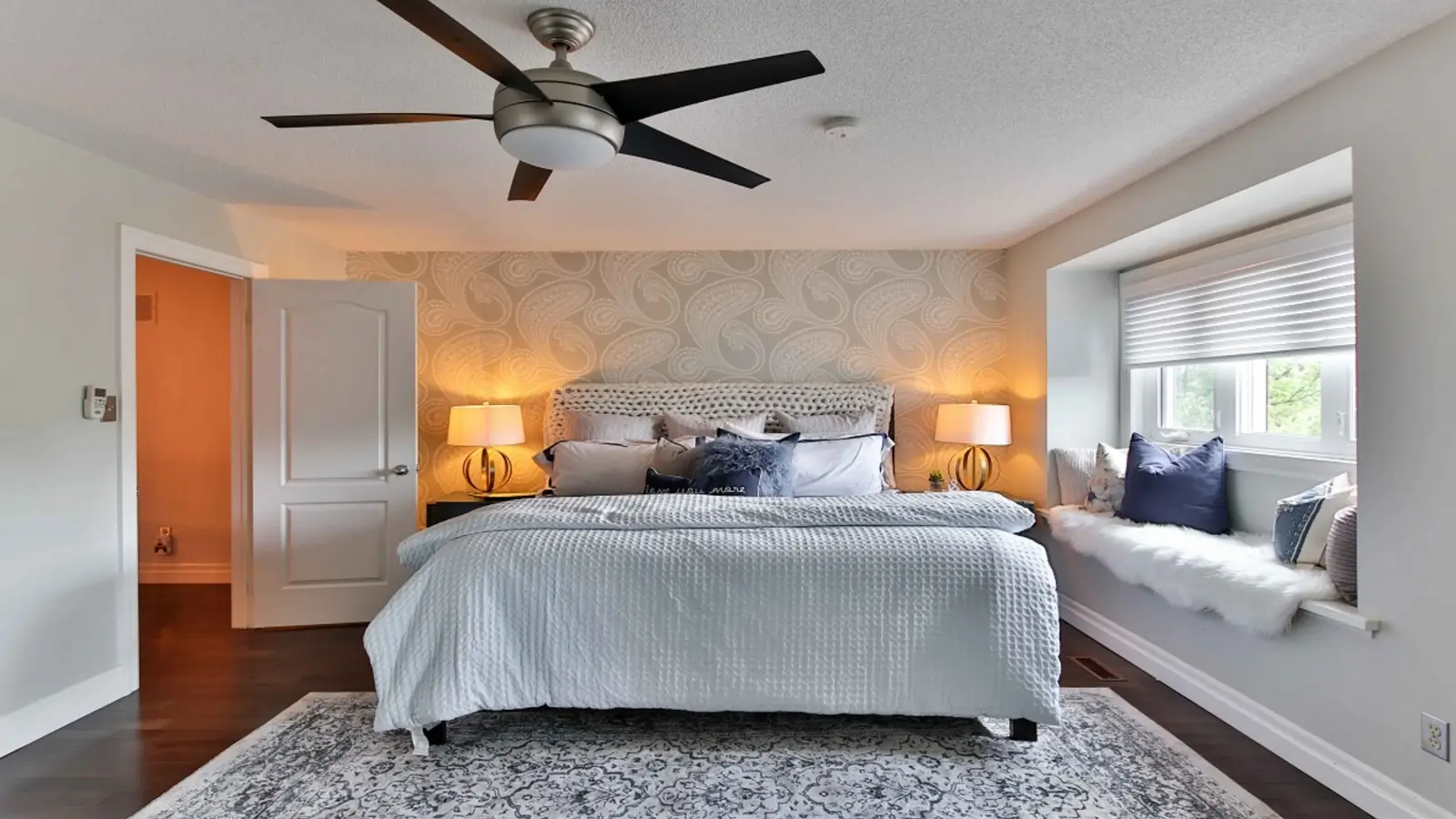Address
3401 W Trinity Blvd, Grand Prairie,
TX 75050, United States.
Work Hours
Monday to Friday: 7AM - 7PM
Weekend: 10AM - 5PM
Address
3401 W Trinity Blvd, Grand Prairie,
TX 75050, United States.
Work Hours
Monday to Friday: 7AM - 7PM
Weekend: 10AM - 5PM

Ceiling fans are stylish and practical additions to almost any room. They provide circulation that can make a space feel less stuffy. These fans are energy efficient, using about the same amount of electricity as a 100-watt light bulb. Adjusting the direction of your ceiling fan can help cool your home during the summer and warm it during the winter. Use this guide to learn the optimal ceiling fan direction year-round for each season.
| Steps to Ensure Proper Ceiling Fan Installation |
|---|
| Ceiling fans should hang between seven and nine feet from the floor. |
| The clearance between the ceiling fan blades and the ceiling should be a minimum of 10 inches. |
| A ceiling fan should be mounted at least 18 inches from any walls. |
| For vaulted ceilings, hang the fan from a down rod to achieve height. |
| If your ceiling is low, consider a flush-mount ceiling fan. |
| Ensure all screws and bolts are securely tightened. |
| Use a leveling tool to check if the fan blades are at the same angle and adjust if necessary. |
Although a ceiling fan doesn’t cool the air, the right fan direction can make a room feel significantly more relaxed. In the summer, your ceiling fan blades should rotate counterclockwise. This direction pushes cooler air in a column, creating a “wind chill” effect. To maximize this effect, run your fan at its highest speed.
| Benefits of Counterclockwise Fan Direction in Summer |
|---|
| Increases thermostat by 4 degrees while maintaining comfort. |
| Reduces energy costs by up to 30%. |
| It creates a cooling breeze to enhance comfort. |
Tip: Stand directly under the fan and look up. If the fan moves counterclockwise, you’ll feel a rush of air.
In colder months, the right ceiling fan direction can help keep your thermostat low while maintaining comfort. Switch your ceiling fan to rotate clockwise. This motion pushes the warm air that rises to the ceiling back down to the floor, helping to distribute heat evenly without creating a draft.
| Benefits of Clockwise Fan Direction in Winter |
|---|
| Lowers heating costs by up to 15%. |
| Distributes warm air evenly throughout the room. |
| Prevents drafty “wind chill” effects. |
Tip: Stand under the fan to check that the blades rotate clockwise.
| Room Type | Recommended Fan Direction | Speed Setting |
|---|---|---|
| Vaulted Ceilings | Counterclockwise (year-round) | High |
| Dining Rooms | Clockwise | Medium or Low |
| Home Office | Clockwise | Medium |
| Smoking Areas | Clockwise | Medium or High |
| Outdoor Areas | Counterclockwise | High |
A ceiling fan does more than provide a good breeze. Here are some troubleshooting, maintenance, and use tips:
Tip: Check the location of the blade direction switch when you get a new ceiling fan. The instruction manual will also explain how to change the direction of that model.
Adjusting your ceiling fan direction according to the season will help make your home more comfortable and energy efficient. You can save on cooling and heating costs by ensuring your ceiling fan rotates clockwise in winter and counterclockwise in summer.
Stand directly under the fan and look up. If the fan is moving counterclockwise, you’ll feel a cool breeze.
Yes, by adjusting the direction of the fan blades, you can use your ceiling fan to cool your home in the summer and distribute warm air in the winter.
Changing the direction of your ceiling fan can help optimize air circulation for cooling in the summer and heating in the winter, improving comfort and energy efficiency.
For optimal airflow, ceiling fans should hang between seven and nine feet from the floor.
No, indoor ceiling fans are not designed to withstand outdoor conditions and can be damaged by heat and humidity. Use a ceiling fan intended explicitly for outdoor use.